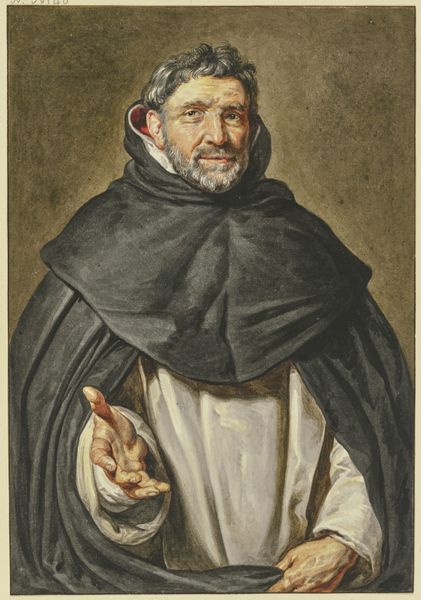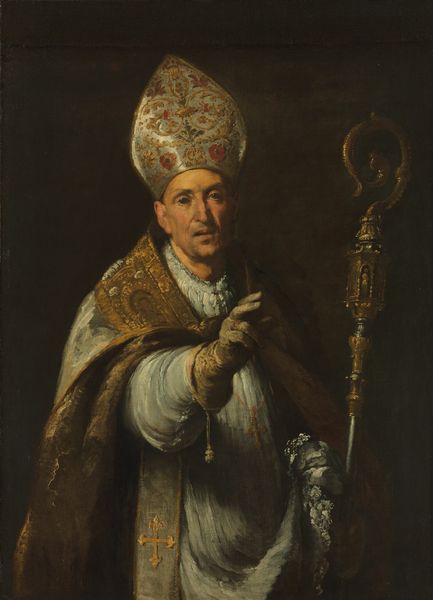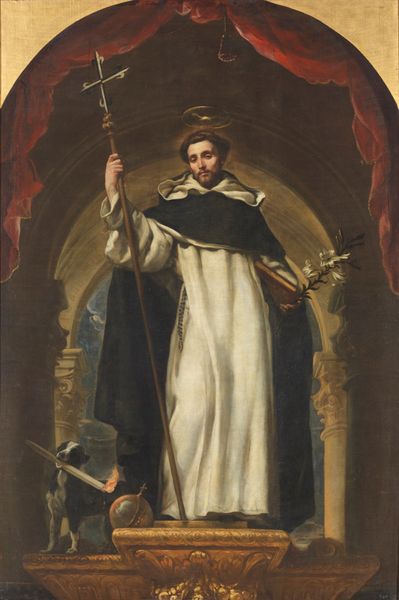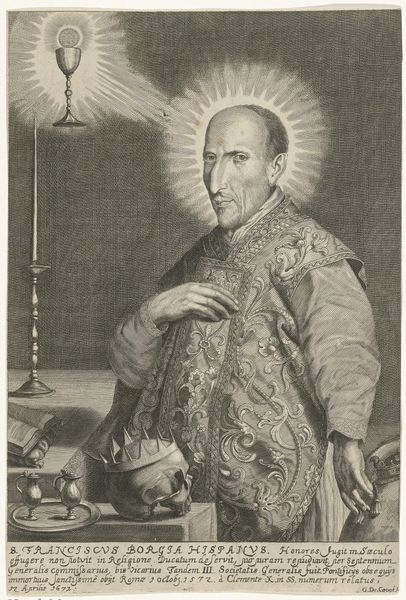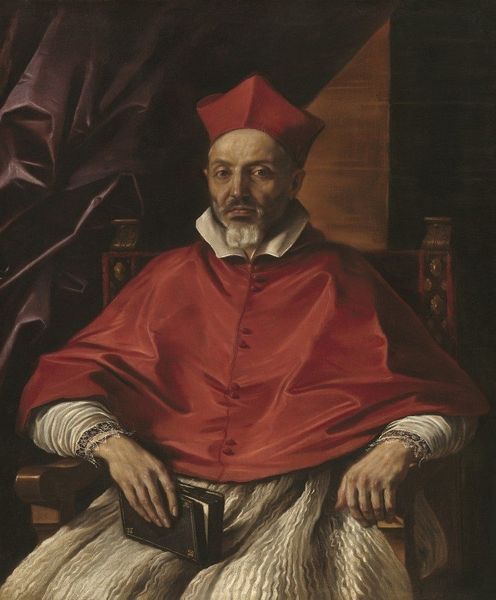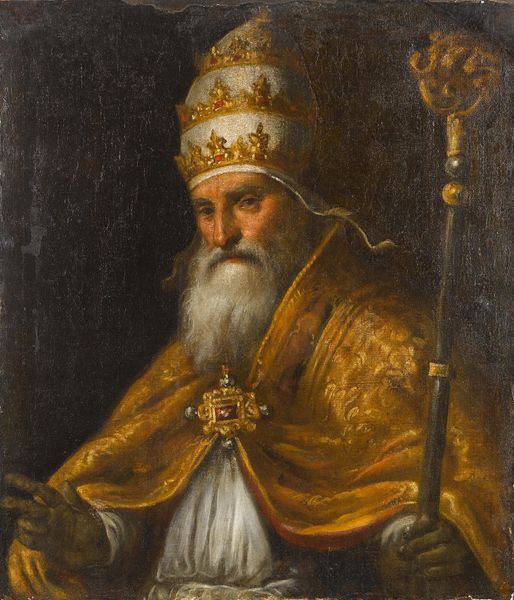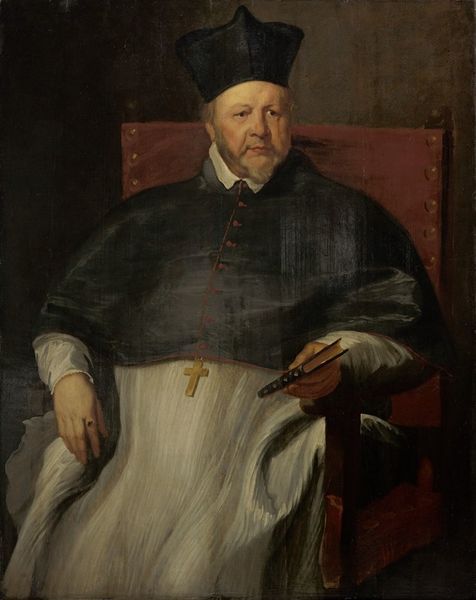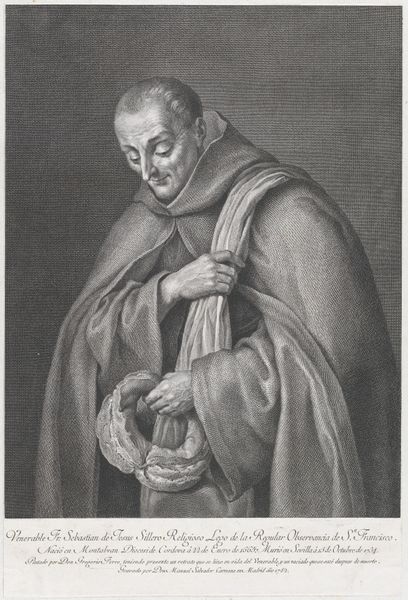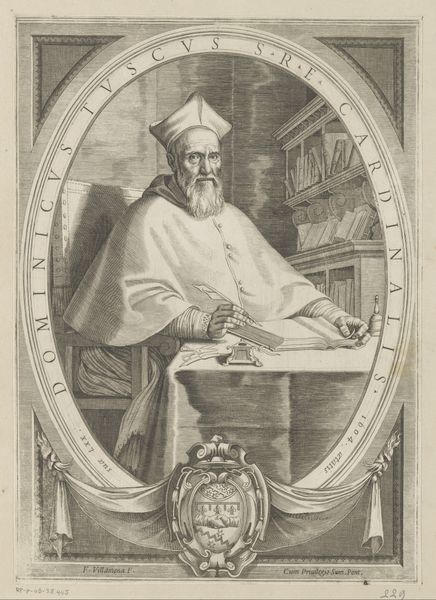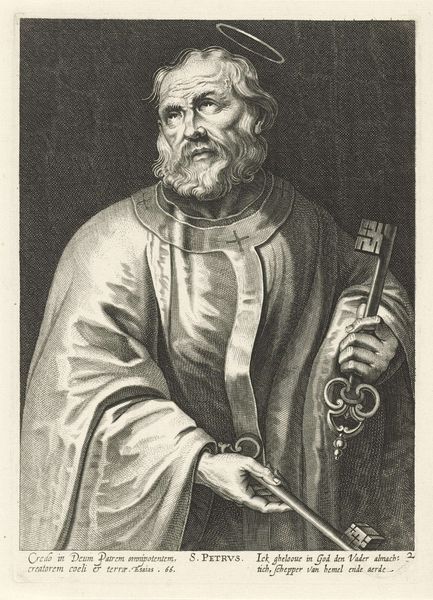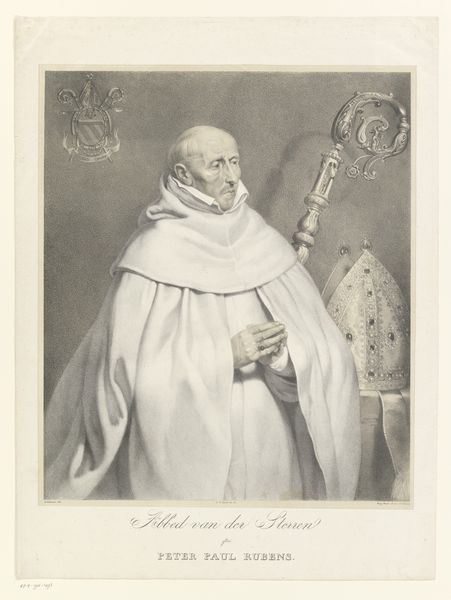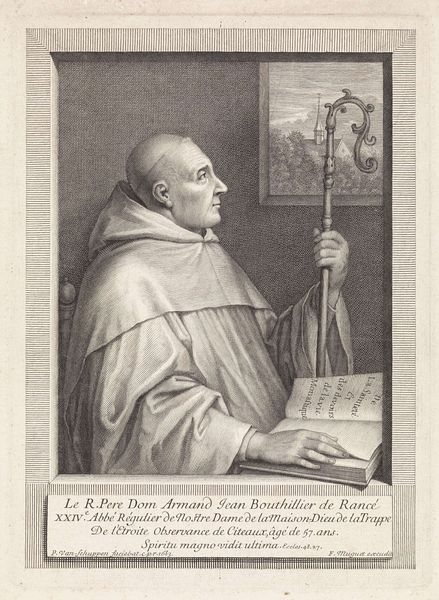
Matthaeus Yrsselius (1541-1629), Abbot of Sint-Michiel's Abbey in Antwerp 1622 - 1625
0:00
0:00
oil-paint
#
portrait
#
baroque
#
oil-paint
#
oil painting
#
history-painting
#
academic-art
Dimensions: 120 cm (height) x 102.5 cm (width) (Netto)
Peter Paul Rubens painted this portrait of Matthaeus Yrsselius, Abbot of Sint-Michiel's Abbey in Antwerp, using oil on canvas. Notice the striking contrast between the Abbot’s pale face and the deep red backdrop, a dichotomy that captures the eye immediately. The painting is structured around vertical elements: the Abbot himself, his staff, and the mitre, which create a sense of solemnity and order. Rubens employs a limited palette, focusing on whites and reds, which enhances the composition's visual impact and emotional depth. The interplay of light and shadow, particularly on the white robes, adds a layer of complexity. These formal elements combine to create a visual language that speaks to the Abbot’s spiritual authority and the painting's role within the cultural codes of its time. Consider how Rubens uses the visual structure to explore themes of power and piety, reflecting the complex relationship between the Church and its leaders. The painting invites us to explore the layers of meaning embedded in its formal composition.
Comments
statensmuseumforkunst almost 2 years ago
⋮
Yrsselius was originally a sepulchral tablet accompanied by an epitaph which does not survive today. The tablet was originally placed by the abbot’s grave in the church of the St.Michael’s Abbey. A few years prior to his death the abbot gave the church an altarpiece for the high altar, featuring a Rubens painting of the Adoration of the Magi. Part of an all-inclusive decoration The tablet was intended to be hung in such a way that the abbot looked towards the high altar with his hands folded in "eternal prayer", taking part in the adoration of the Christ Child on the altarpiece. This form of all-inclusive decoration, where figures in paintings are connected by the mental bridge established through a gaze, a gesture, or spatial links, is a typical feature of the Baroque. The portrait's colour scheme Matthæus Yrsselius had his portrait painting wearing the white habit of the Premonstratensians with the mitre and the crozier by his side. In a colour scheme typical for Rubens, the white habit shines like mother-of-pearl against a lacquer-red background where the shadow cast by the crozier gives depth.
Join the conversation
Join millions of artists and users on Artera today and experience the ultimate creative platform.

